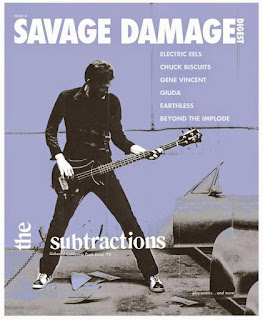Zines are written in a variety of formats, from desktop published text to comics to handwritten text (an example being the hardcore punk zine Cometbus). Print remains the most popular zine format, usually photocopied with a small circulation. Topics covered are broad, including music fan-fiction, politics, poetry, art and design, ephemera, personal journals, social theory, riot grrrl and intersectional feminism, single-topic obsession, or sexual content far outside of the mainstream enough to be prohibitive of inclusion in more traditional media. The time and materials necessary to create a zine are seldom matched by revenue from sale of zines.
A punk zine (or punk zine) is a zine related to the punk subculture and hardcore punk music genre. Often primitively or casually produced, they feature punk literature, such as social commentary, punk poetry, news, gossip, music reviews and articles about punk rock bands or regional punk scenes. The DIY aesthetic of the punk subculture created a thriving underground press. Such amateur magazines were inspired by the rock fanzines of the early 1970s, which were inspired by zines from the science fiction fan community. Perhaps the most influential of the fanzines to cross over from science fiction fandom to rock and, later, punk rock and new wave music was Greg Shaw’s Who Put the Bomp, founded in 1970.
Looking at a number of zines what was most influential were the rough punk style zines, these would be cheaply mass produced using photo copiers and would usually be black and white or one singular colour and white. These methods of production would be efficient to use, cheaply mass produced to reach a wider audience.


















No comments:
Post a Comment